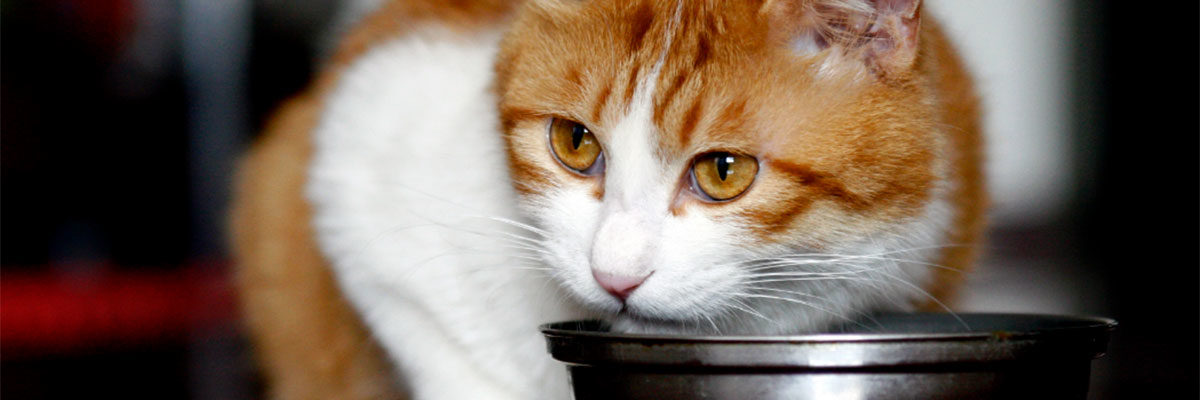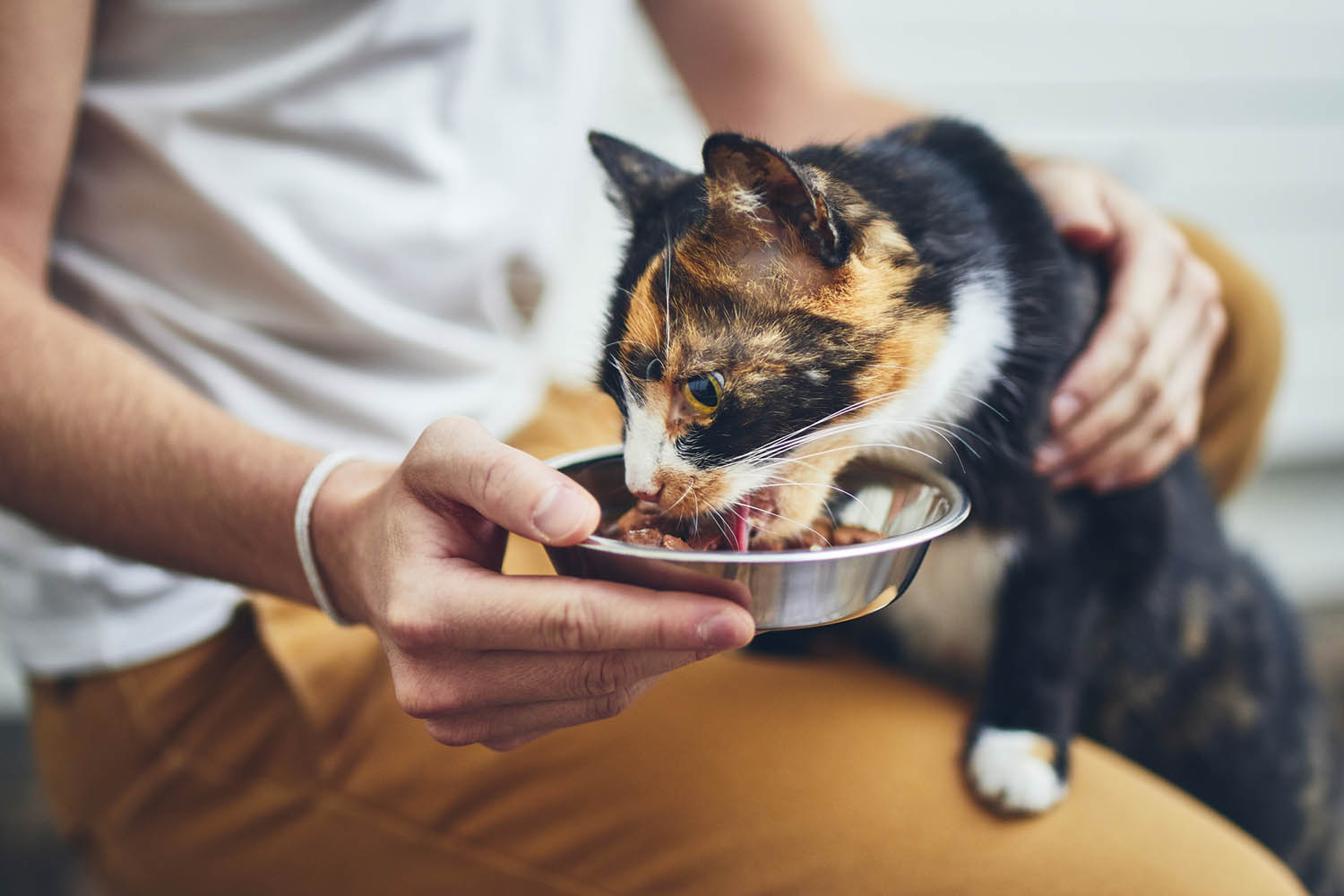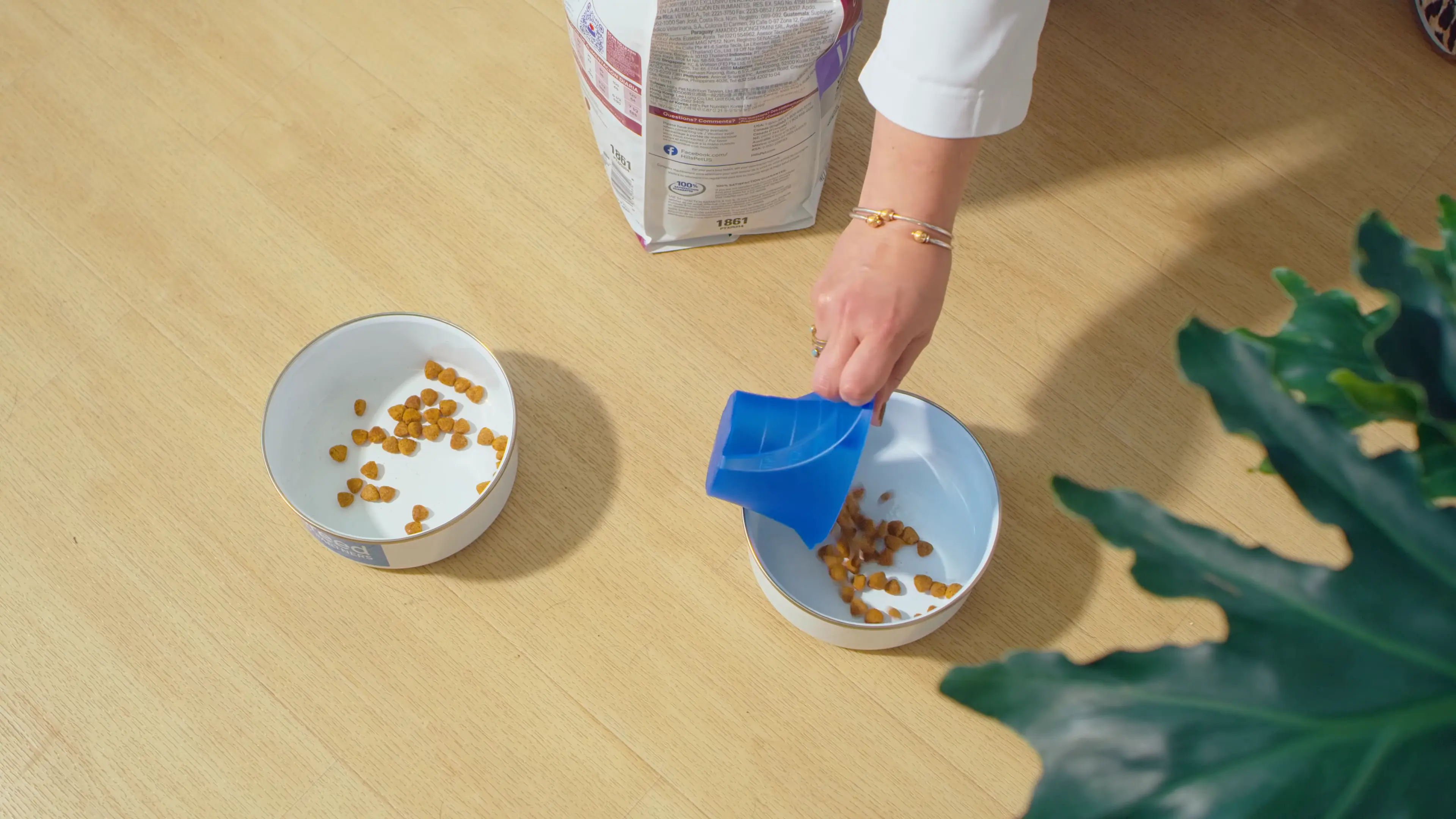Cats are important members of the household for millions of families and have unique nutritional needs that help support their body systems for long and healthy lives.
Learn more about cat nutrition as we explore the nutrients required in a complete and balanced cat food and the role they play in your cat’s well-being. Our blog post helps explain some of the distinct differences between a dog and cat’s nutritional needs.
Want to learn more about dogs? Click here to learn more about canine nutrition.
Fat-Soluble Vitamins
Veterinary nutritionists have identified a diverse range of essential vitamins that may be provided through food ingredients and supplemental form in a pet food recipe. Fat-soluble vitamins can be stored in the body’s fatty tissue and liver. Some of the main functions of these vitamins include:
Vitamin A
Vitamin A is essential for cell development, growth, vision and immune function.
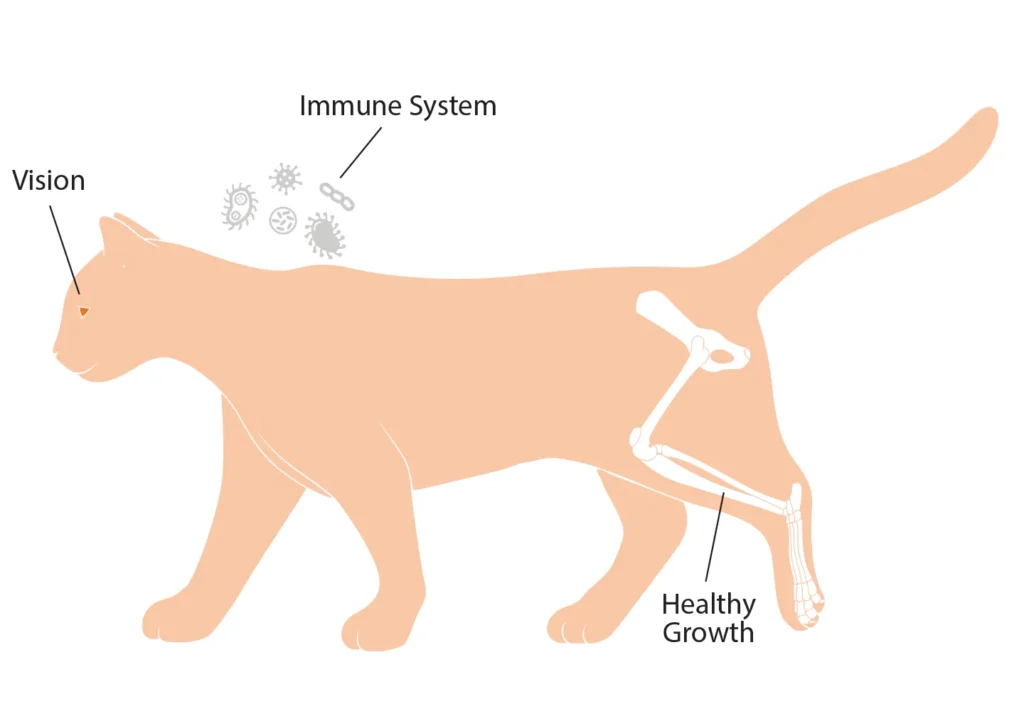
Vitamin D
Cholecalciferol (Vitamin D3) supports calcium metabolism and skeletal health.
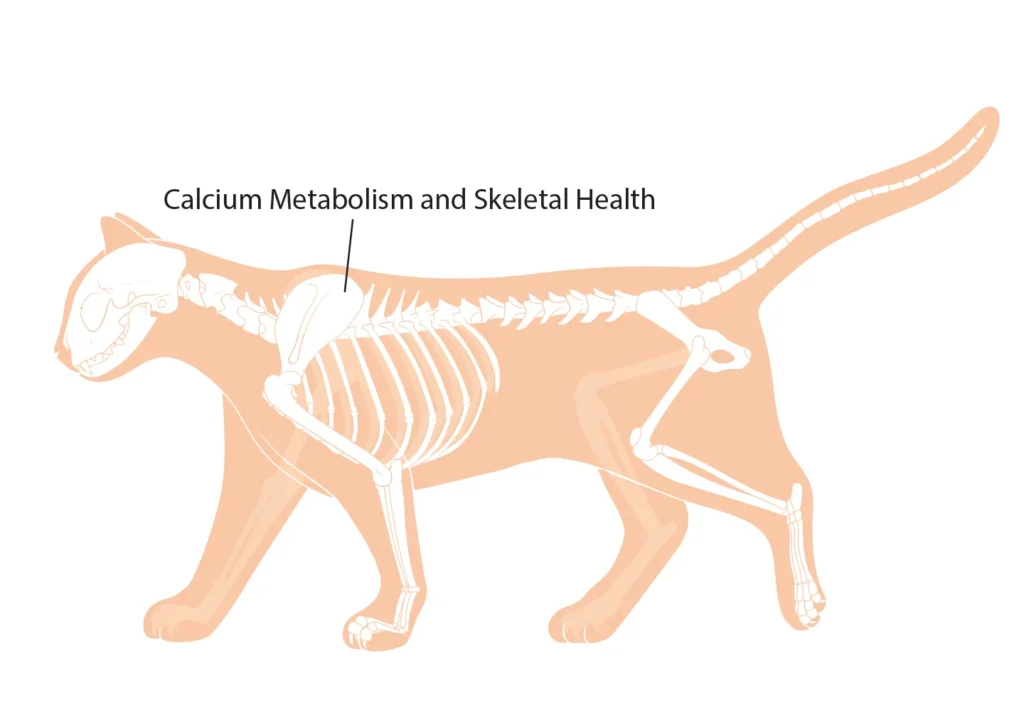
Vitamin E
Vitamin E (alpha-tocopherol) serves as an antioxidant within the body, which scavenges free radicals, supports the immune system and a healthy skin and coat.
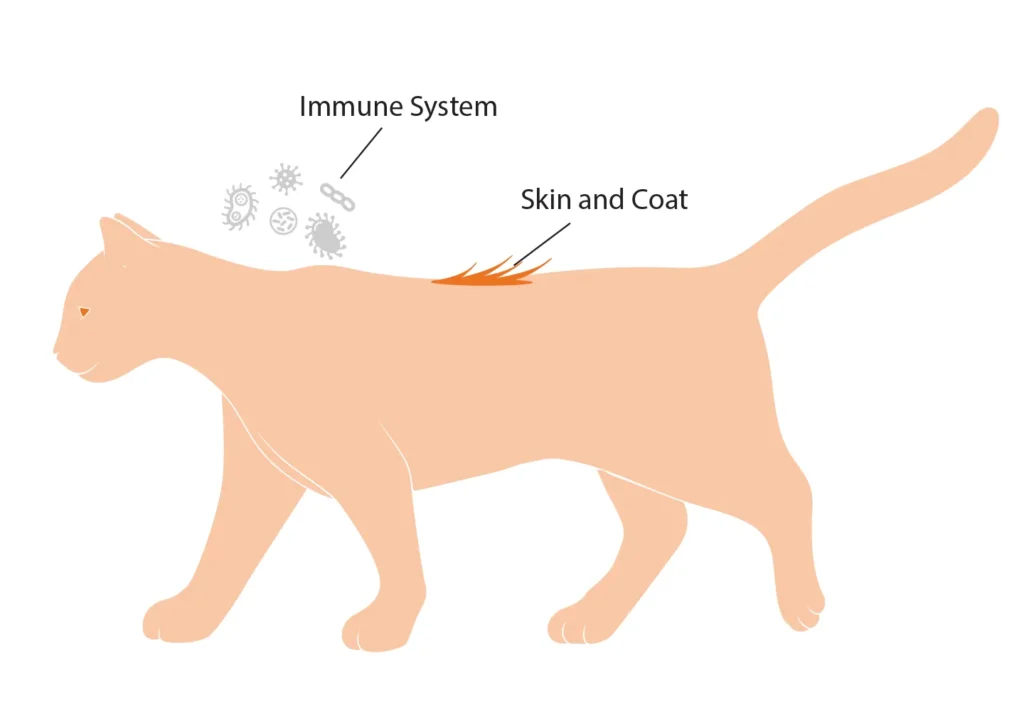
Vitamin K
Vitamin K is essential for the protein synthesis involved in blood clotting and bone formation.
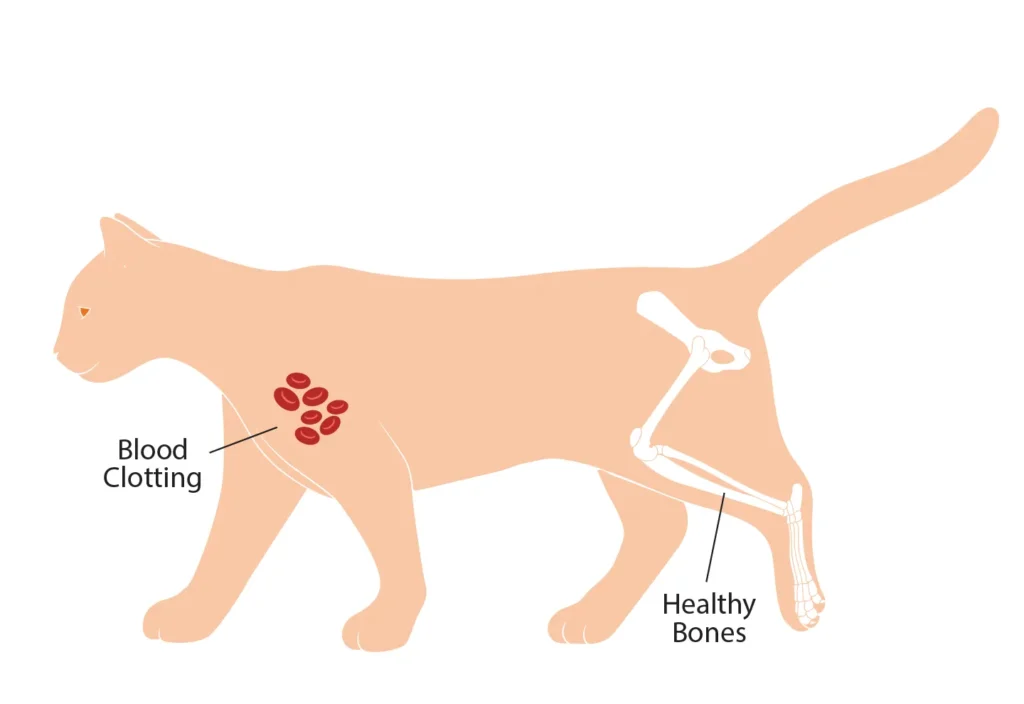

Source: National Research Council. “Vitamins.” Nutrient Requirements of Dogs and Cats. The National Academies Press, 2006. 193-245. Print.
Water-Soluble Vitamins
Many of these vitamins are critical to the process of converting fats, proteins and carbohydrates into energy for cats, known as energy metabolism, while also supporting other specific cellular functions.
B-Complex Vitamins
B-Complex vitamins play a role in energy metabolism and nerve tissue maintenance and growth.
Thiamine (Vitamin B1): Plays a role in energy metabolism and nerve tissue maintenance and growth.
Riboflavin (Vitamin B2): Supports coenzymes which are essential to energy metabolism.
Niacin: A component of enzymes necessary for metabolizing fats, protein and carbohydrates.
Pantothenic Acid: A necessary component in metabolizing fats and carbohydrates into energy, as well as protein metabolism and synthesis.
Pyridoxine (Vitamin B6): Serves as a coenzyme in over 100 reactions involved in energy production, red blood cell function and the making of niacin.
Folic Acid: Necessary in the metabolism of nucleotides, amino acids and proteins.
Vitamin B12: Supports the making of red blood cells and the metabolism of fatty acids and proteins.
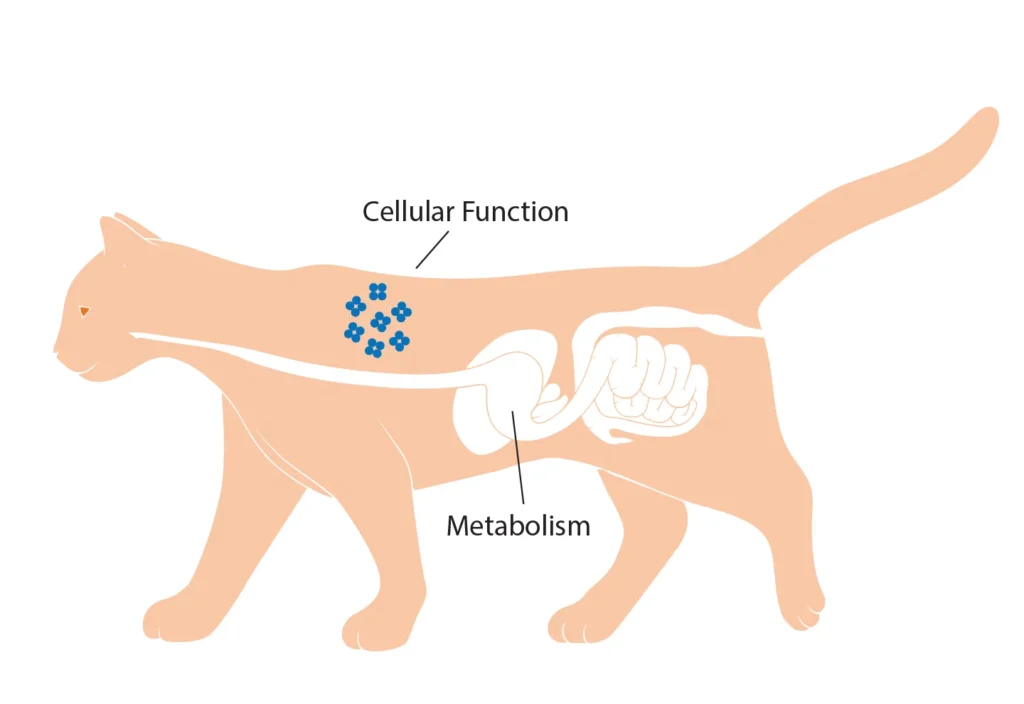
Biotin
Biotin is an essential cofactor within the metabolic process.

Choline
Choline is important in fat metabolism, neurotransmission and liver function.
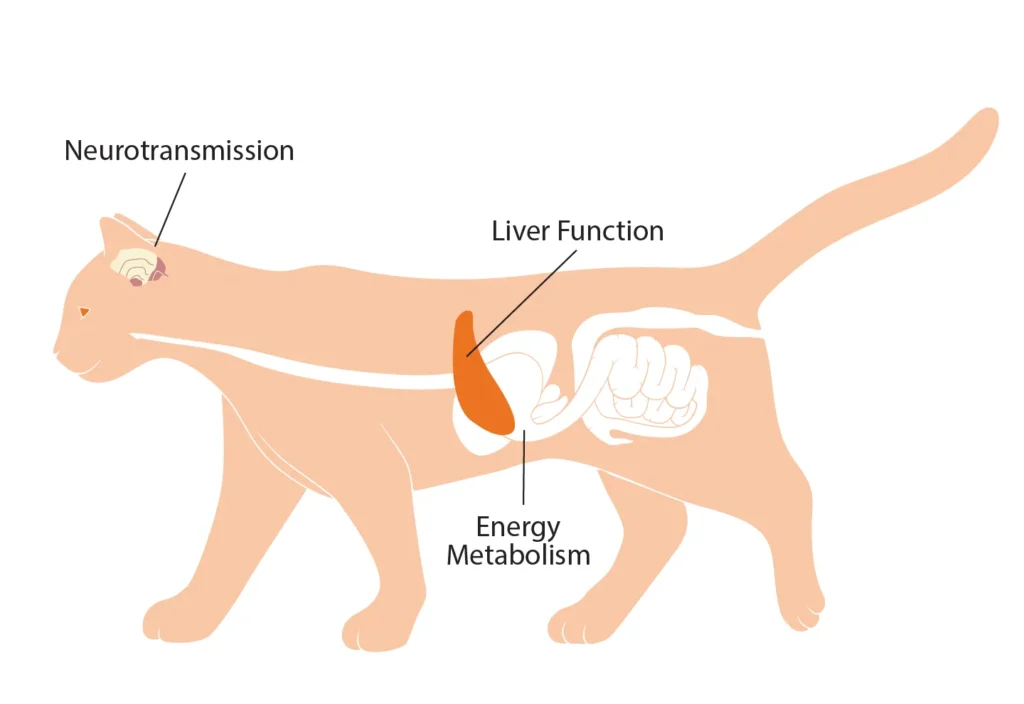
Vitamin C
Ascorbic Acid (Vitamin C) is not identified as a daily essential vitamin because cats can make it themselves. However, it does help support your cat’s healthy immune system and cartilage.
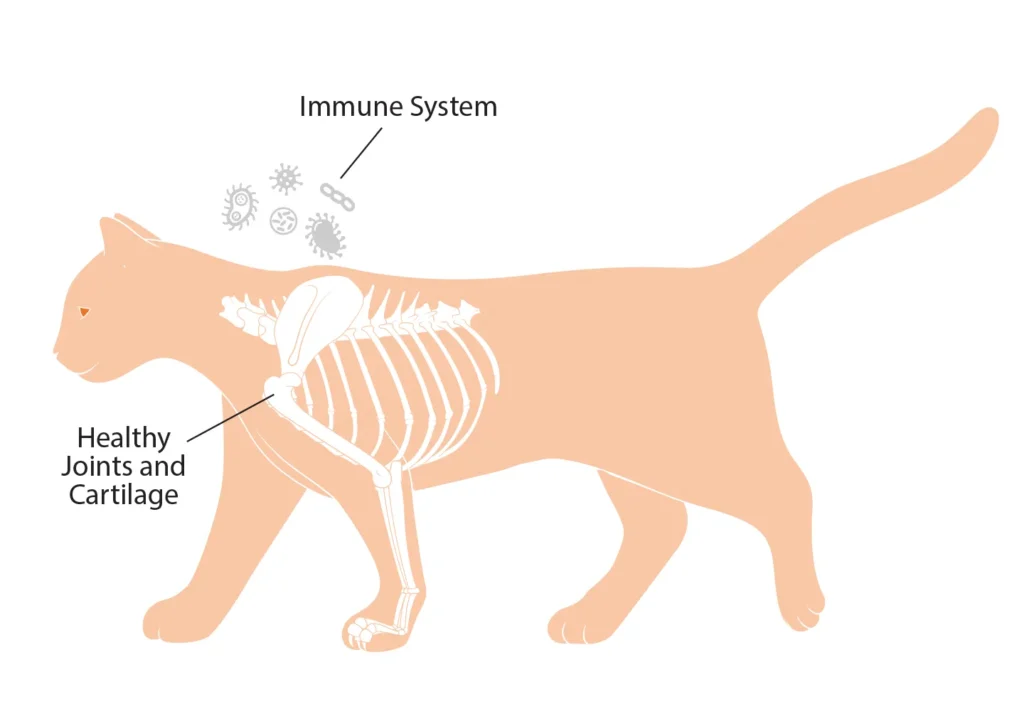

Source: National Research Council. “Vitamins.” Nutrient Requirements of Dogs and Cats. The National Academies Press, 2006. 193-245. Print.
Minerals
Essential minerals for cats can be divided into two separate categories based on their dietary requirements and concentrations in the body. The largest amounts are of the macrominerals, while the trace minerals are required in very small amounts. Minerals are present in nearly all food ingredients, but are sometimes added via specialized ingredients to be sure your pet is provided with the proper balance. Some cat food labels will include “ash” in the Guaranteed Analysis, which reflects the sum of all the minerals in the food.
Some of the main functions of these minerals include:
Calcium (Ca), Phosphorus (P)
The core roles of calcium and phosphorus are in a cat’s bones. The highest concentration of both macrominerals is in the bones. These minerals support cell electrical activity in nerves and muscles, as well as many other functions.
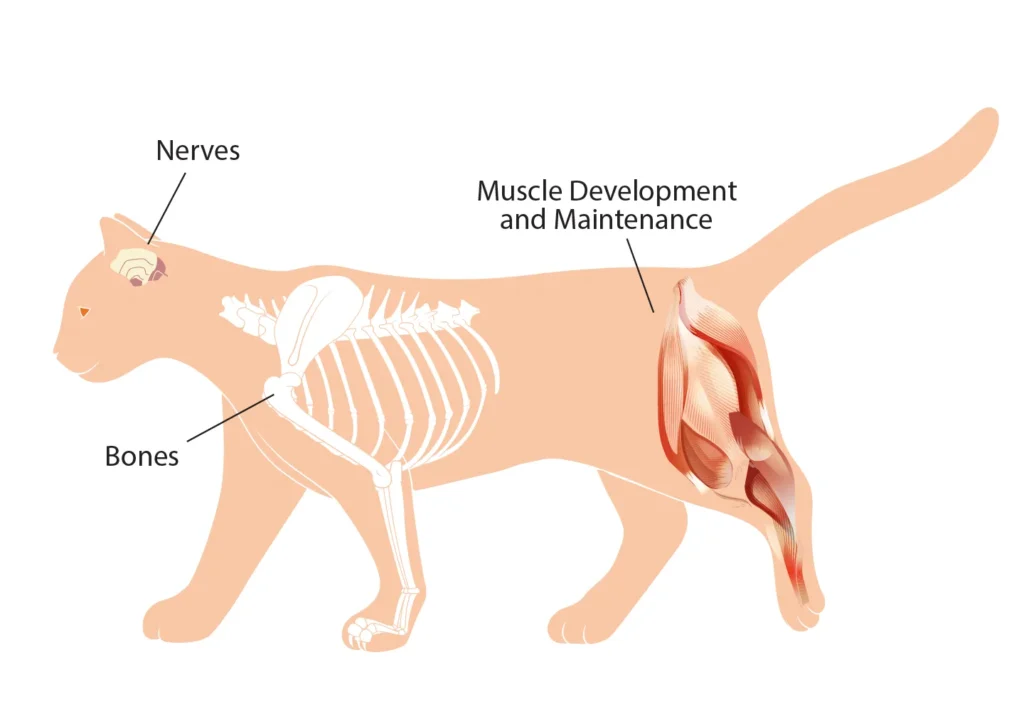
Sodium (Na), Chloride (Cl)
Sodium and chloride both play key roles in maintaining the balance of fluid inside and around cells.
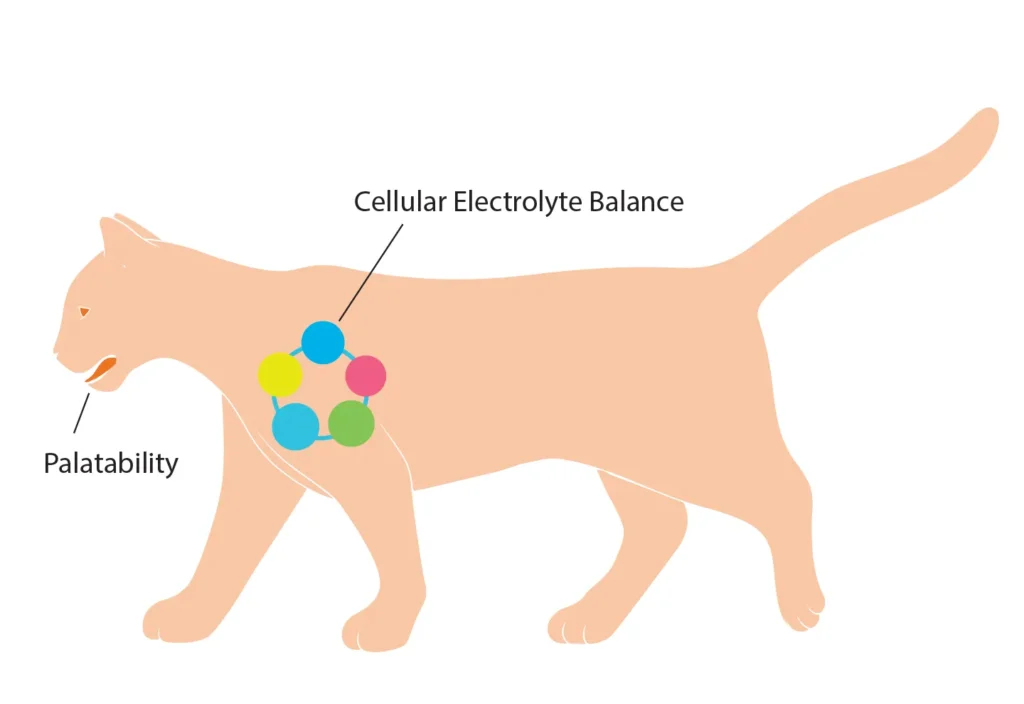
Magnesium (Mg)
Magnesium in bones makes up over 50% of all the magnesium in the body. Magnesium works with calcium to support bone integrity and heart cell function. The mineral is involved in hundreds of reactions in the body.
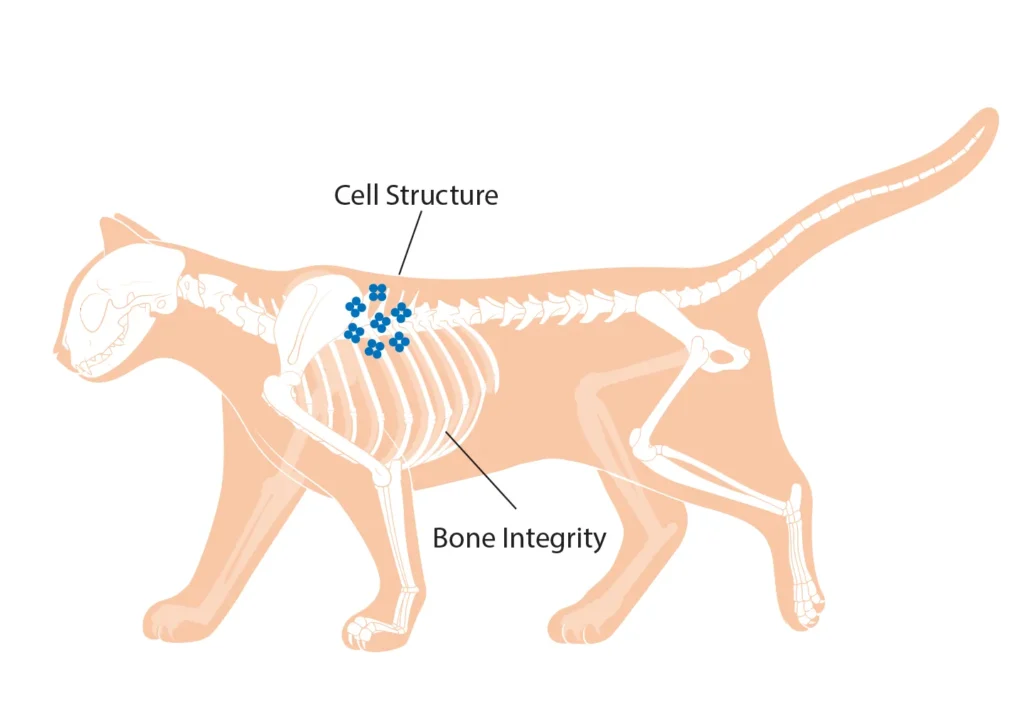
Potassium (K)
Potassium is most important in helping maintain the electrolyte balance in cells. Potassium deficiency in kittens is striking in that it can result in severe muscle weakness in the neck.
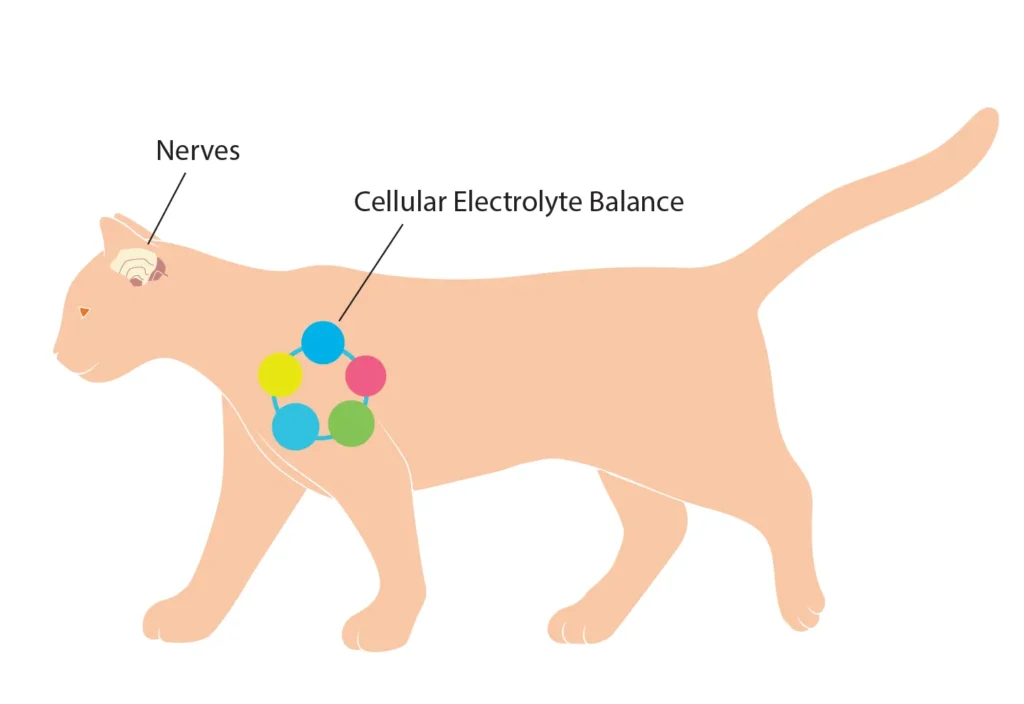
Iron (Fe), Zinc (Zn), Manganese (Mn), Iodine (I), Selenium (Se), and Copper (Cu)
These essential trace minerals are required in very small amounts.
Iron: Supports the synthesis of red blood cells (hemoglobin).
Zinc: Required for functioning of many enzymes and skin integrity.
Copper: Important in enzyme function, reproduction and maintenance of coat color.
Manganese: Supports bone development and is an essential part of enzymes.
Iodine: Supports thyroid function and is key in making many thyroid hormones that act throughout the body
Selenium: Functions as part of an antioxidant enzyme and works in tandem with Iodine to support thyroid hormones.
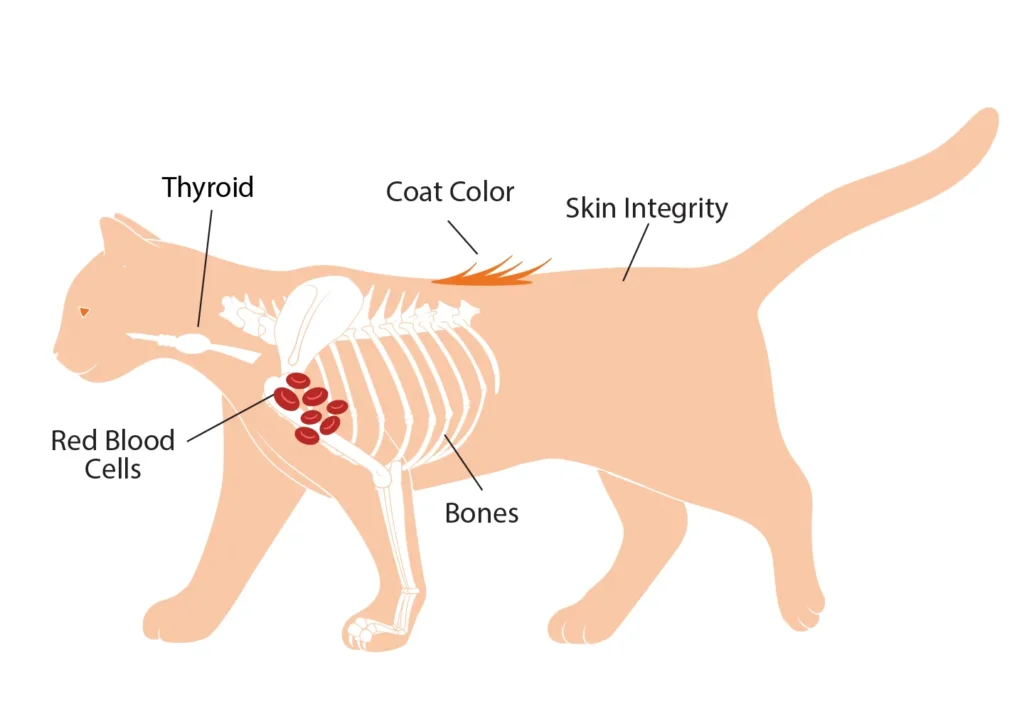

Source: National Research Council. “Minerals.” Nutrient Requirements of Dogs and Cats. The National Academies Press, 2006. 145-192. Print.
Protein & Amino Acids
Proteins, made up of amino acids, serve a range of important functions for cats. While there are 20 amino acids present in proteins, 10 of these are considered essential (needed daily) for adult cats.1 Growing kittens need not only the essential amino acids, but also non-essential ones for necessary weight gain.2 Both kittens and adult cats need more of certain specific amino acids than dogs.
Without the proper levels of each of the essential amino acids, the synthesis of all proteins is impaired. Cats are extremely sensitive to the lack of the amino acid arginine, which is thought to be related to cats being carnivores.3 They also require more phenylalanine and tyrosine than dogs in order to maintain the black color in their coats.4 Various protein sources deliver the amino acids that help a cat develop and maintain its muscles, blood, organs, enzymes, antibodies, hormones, skin and coat.
The amino acids below are required in the Association of American Feed Control Officials (AAFCO) profile, while taurine is also required for cats. A cat cannot make sufficient taurine by his or herself, making it an essential daily nutrient in their diet. Taurine deficiency leads to eye degeneration and heart problems.
- Arginine (Arg)
- Histidine (His)
- Isoleucine (Ile)
- Leucine (Leu)
- Lysine (Lys)
- Methionine (Met) and Methionine-Cystine
- Phenylalanine (Phe) and Phenylalanine-Tyrosine
- Threonine (Thr)
- Tryptophan (Trp)
- Valine (Val)
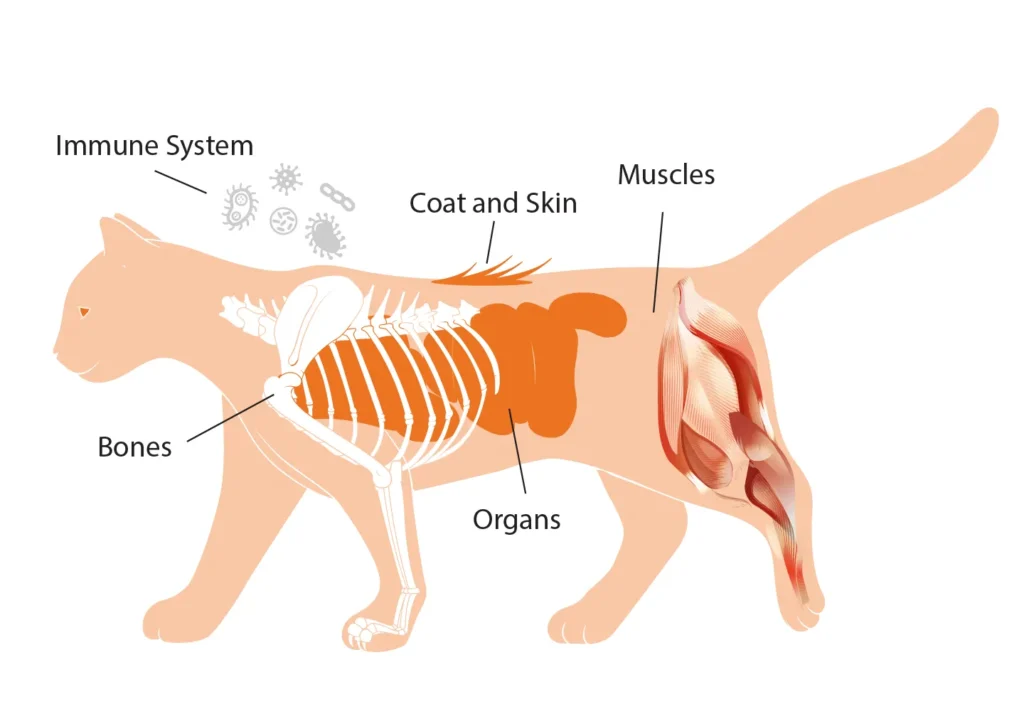
1 – National Research Council. “Protein and Amino Acids.” Nutrient Requirements of Dogs and Cats. The National Academies Press, 2006. 111-144. Print.
2 – J Nutrition 109(4):718-23 (1979) QR Rogers, JG Morris
3 – Science 199:431-432 (1978) JG Morris, QR Rogers
4 – J Nutrition 132:2037-2042 (2002) PJB Anderson, QR Rogers, JG Morris
Fats
Fats are the major energy source for cats. They are made up of fatty acids, including essential fatty acids (EFAs), which cannot be made in enough quantity by the body and must be obtained from food. The EFAs for cats are slightly different than for dogs. While both cats and dogs need the fatty acid called linoleic acid (an Omega-6 fatty acid), cats also require the slightly more complex fatty acid called arachidonic acid (also an Omega-6 fatty acid). Two other fatty acids, both classified as Omega-3 fatty acids (EPA & DHA), are required for the growth of kittens. Omega-6 and Omega-3 fatty acids must be balanced for overall health.
Because fatty acids are part of every cell in the body, they are important to every structure. The most visible role of EFAs is in supporting healthy skin and coat. They also have key functions in the visual and immune systems, as well as brain development.
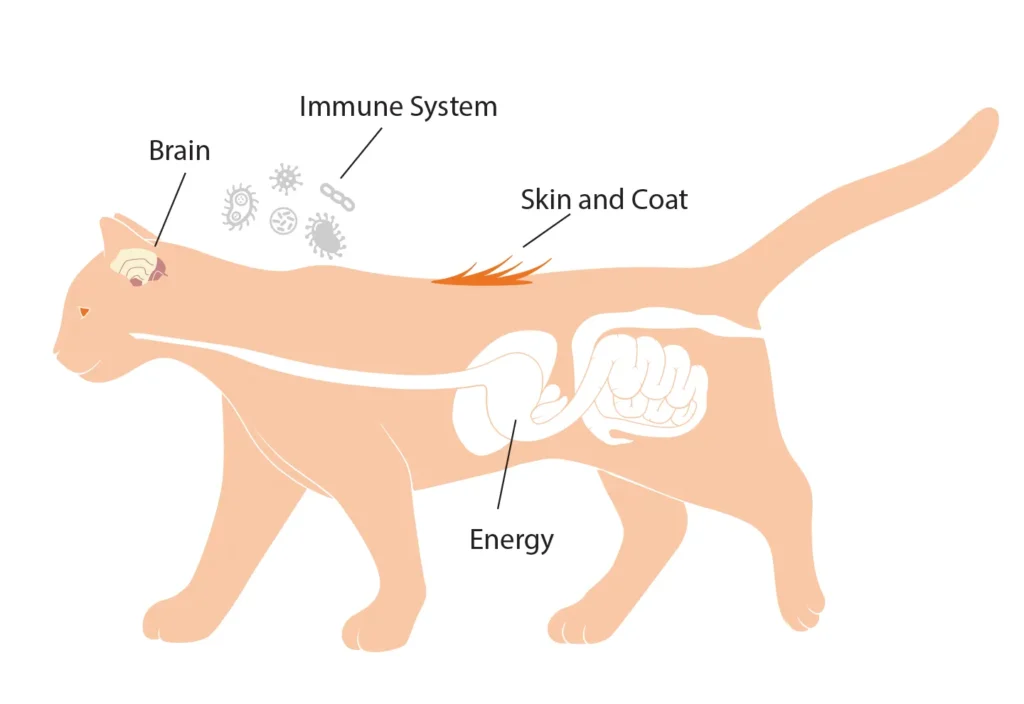
1 – National Research Council. “Fat and Fatty Acids.” Nutrient Requirements of Dogs and Cats. The National Academies Press, 2006. 81-110. Print.
2 – J Nutrition 109(4):718-23 (1979) QR Rogers, JG Morris
Carbohydrates
While carbohydrates are not categorized as essential nutrients in the Association of American Feed Control Officials (AAFCO) nutrient profiles, they have important roles in cat nutrition and function of the body. Cats are able to utilize carbohydrates, whether as starch or as the various fiber sources. Digestible carbohydrates can support your cat’s health by providing a readily available energy source.
Carbohydrates also contain the class of nutrients known as dietary fibers, which are vital for the support of a healthy gut environment. They also encourage the movement of waste materials out of the body. Dietary fiber is especially important for cats in helping to move hair from grooming through their system.
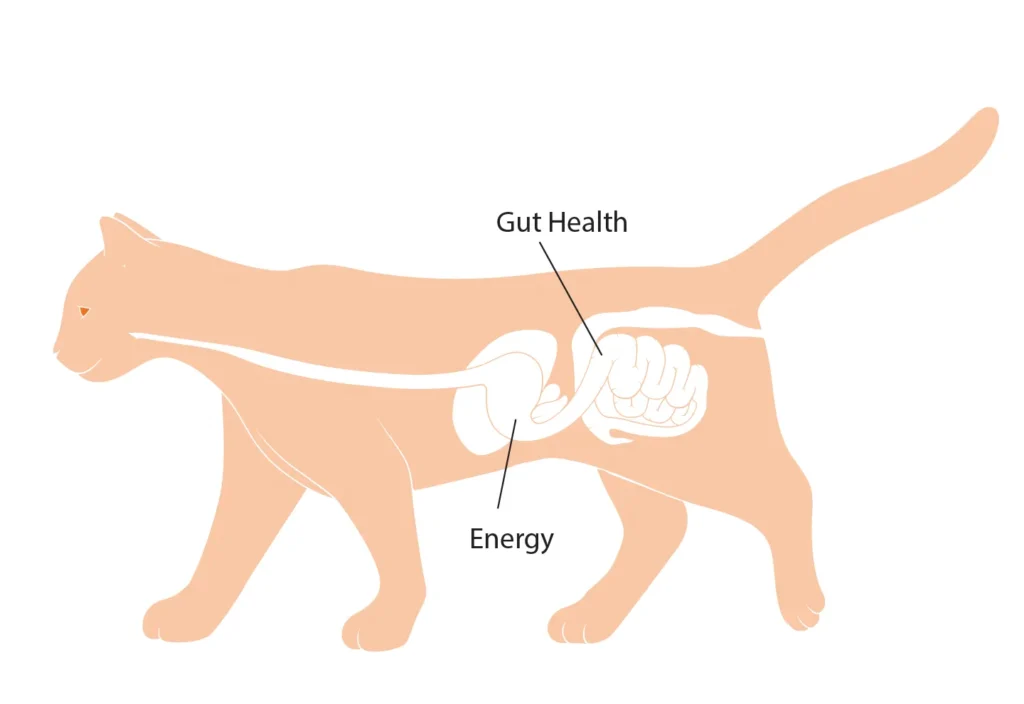
Source: National Research Council. “Carbohydrates and Fiber.” Nutrient Requirements of Dogs and Cats. The National Academies Press, 2006. 49-80. Print.
